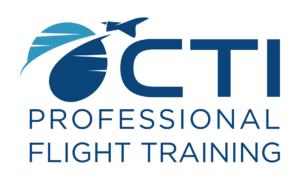5 Ways Flight Simulation Makes You a Better Pilot
Before flight simulators learning to fly was a lot more dangerous. Young pilots didn’t have to wait too long to find a safer way to learn, because the first simulator showed up in 1927. Pilot and flight instructor Ed Link invented the first flight simulator and named it the Link Trainer. It replicated a complete cockpit, giving starting pilots valuable experience without the danger of real flight.
Flight simulation has come a long way since the Link Trainer. Today’s flight simulators are very realistic and range from full-motion enclosed devices like CTI’s Redbird FMX to smartphone apps. With so many safe learning options, there’s never been a better time to use flight simulation to hone your skills. Let’s take a closer look at how training with flight simulation makes you a better pilot.
Advanced Training
Today’s flight simulators make it possible for you to learn both basic and advanced skills in a safe environment. While beginners use flight simulation to learn the basics, experienced pilots can benefit from simulation training too. Modern flight simulators offer customized options to tailor training for different types of aircraft and ratings.
Stay in Practice
Good pilots know that getting cockpit time is important to stay sharp. Maintaining and building upon your proficiency strengthens your skills, reduces risks, and helps you become the best pilot you can be. Flight simulators are a cost-effective way for you to practice routine and rarely used skills.
Communication Practice
Understanding the fundamentals of radio communication is important for pilots, but it can be a challenge. Even veteran pilots sometimes struggle to keep up with the fast pace of ATC communication. Simulators offer many options to help you practice proper radio technique and master the ATC communication skills needed for flying safely.
Navigation Skills
A simulator can help pilots improve and enhance both VFR and IFR navigation skills. If you’re planning a cross-country trip or flying to an unfamiliar destination, you can use the simulator to practice the flight route before you do it. Another navigation benefit is practicing entering and executing instrument procedures using onboard navigational devices and equipment.
Manage Risk
Perhaps the biggest benefit to training with simulation is the ability to practice in-flight emergencies and high-risk scenarios without the threat of real danger. In a simulated flight, you’re free to make mistakes that would be impossible to survive in a real plane. Simulation allows you to feel what it’s like in emergency situations and feel what it’s like to go through the motions of safely recovering.
Ready to Start Training with a State of the Art Flight Simulator?
CTI students get their simulator training with our FFA approved Redbird FMX flight simulator. See it for yourself in action here.
